Compromise of 1850
Discover how this important agreement tried to solve America's slavery debate and delayed the Civil War!
What Was the Compromise of 1850?
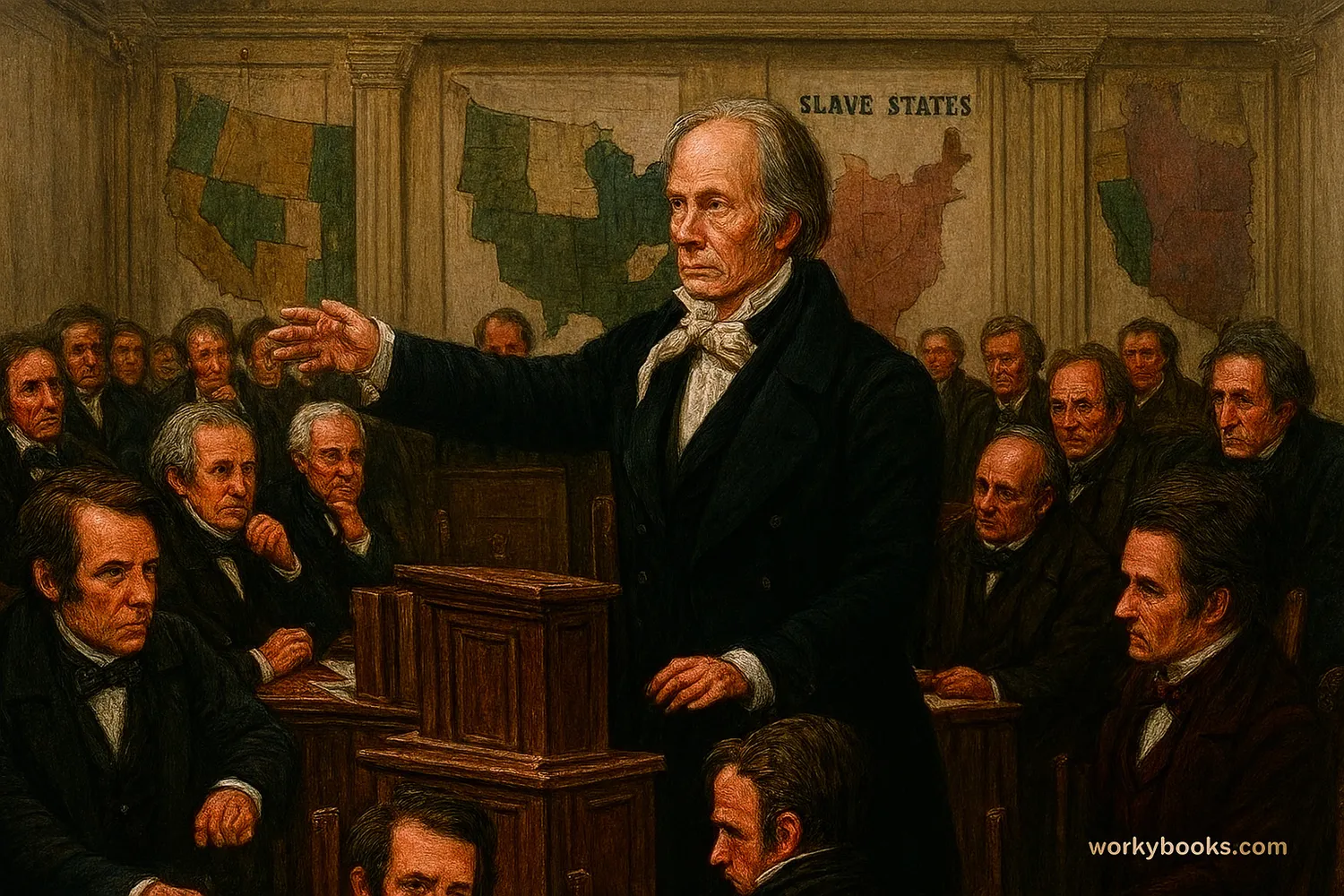
The Compromise of 1850 was a series of five laws passed by the United States Congress in September 1850. These laws tried to solve the disagreements between Northern and Southern states about slavery and territorial expansion.
After the Mexican-American War (1846-1848), the United States gained new territories in the West. The big question was: Would these new territories allow slavery or be free? This debate threatened to tear the country apart. The Compromise of 1850 was an attempt to keep the peace between Northern states (which were mostly against slavery) and Southern states (which supported slavery).
Did You Know?
The Compromise of 1850 was the last major political agreement where all regions of the United States—North, South, and West—worked together before the Civil War!
The Five Laws of the Compromise
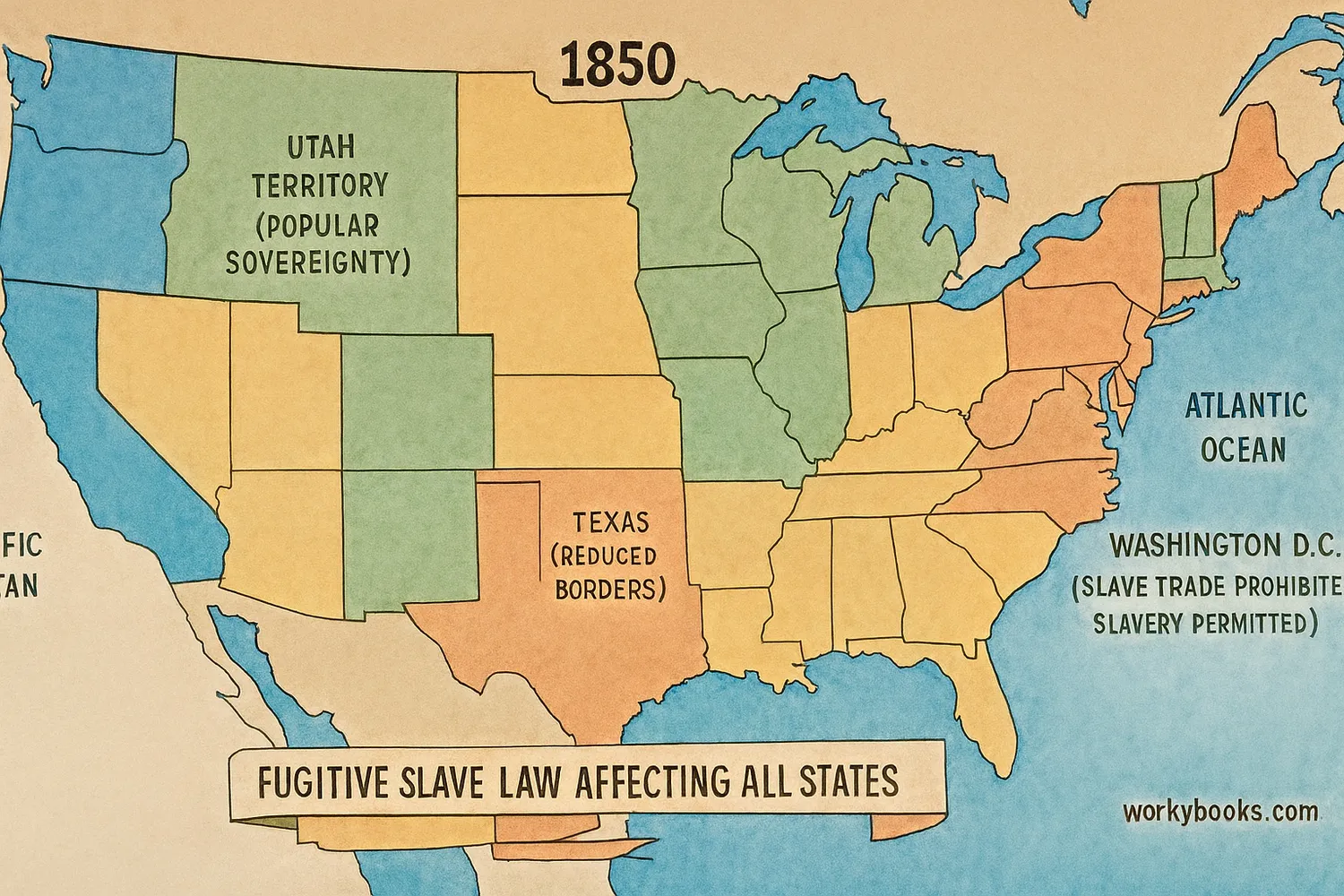
The Compromise consisted of five separate laws that tried to balance the interests of free states and slave states:
California Statehood
California entered the Union as a free state (no slavery allowed)
Utah & New Mexico
These territories would decide about slavery using popular sovereignty (letting residents vote)
Texas Borders
Texas gave up claims to New Mexico territory in exchange for the U.S. taking on its debt
Slave Trade in D.C.
The slave trade (buying and selling enslaved people) was banned in Washington, D.C.
Fugitive Slave Act
A strong new law required citizens to help capture escaped enslaved people
Each part of the Compromise gave something to both sides. The North got California as a free state and an end to slave trading in the nation's capital. The South got a stronger Fugitive Slave Law and the possibility of slavery expanding into Utah and New Mexico territories.
Henry Clay and the Great Debate
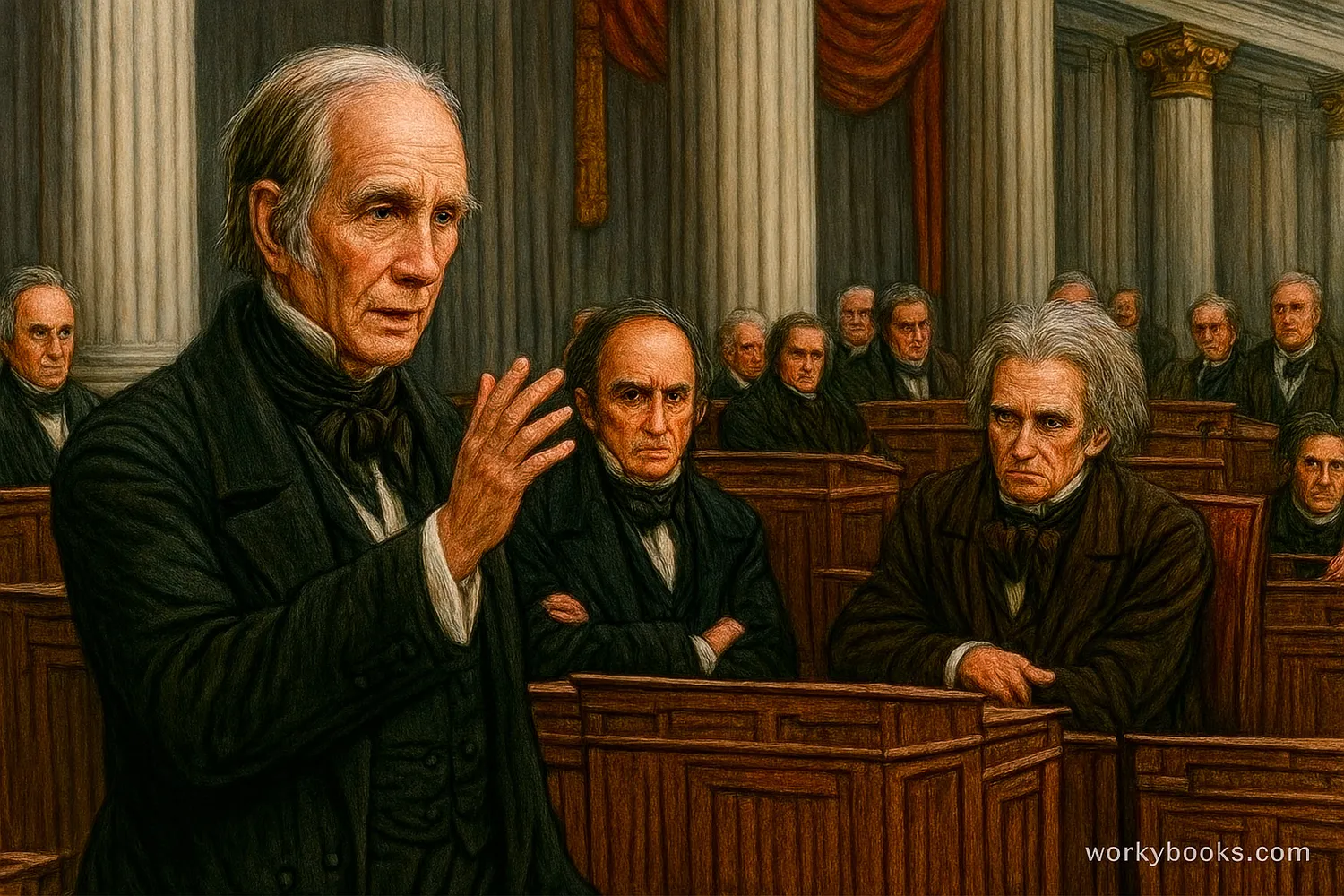
Henry Clay, a senator from Kentucky, was the main architect of the Compromise of 1850. He had earned the nickname "The Great Compromiser" for his work on earlier agreements like the Missouri Compromise of 1820.
Clay argued that the Compromise would preserve the Union and prevent civil war. He spent months working on the details and trying to convince other politicians to support his plan. The debate was intense and emotional, with famous speeches for and against the Compromise.
Key Figures in the Debate
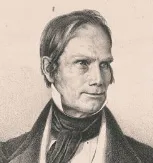
Henry Clay
Kentucky Senator who created the Compromise
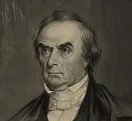
Daniel Webster
Massachusetts Senator who supported the Compromise to save the Union
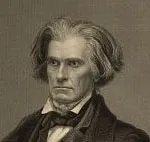
John C. Calhoun
South Carolina Senator who opposed the Compromise
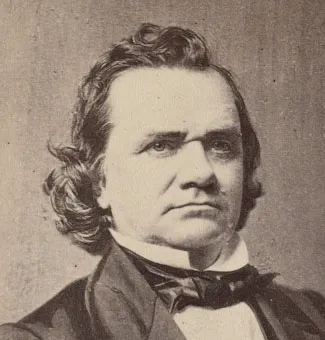
Stephen Douglas
Illinois Senator who helped pass the Compromise after Clay left Washington
The Fugitive Slave Act
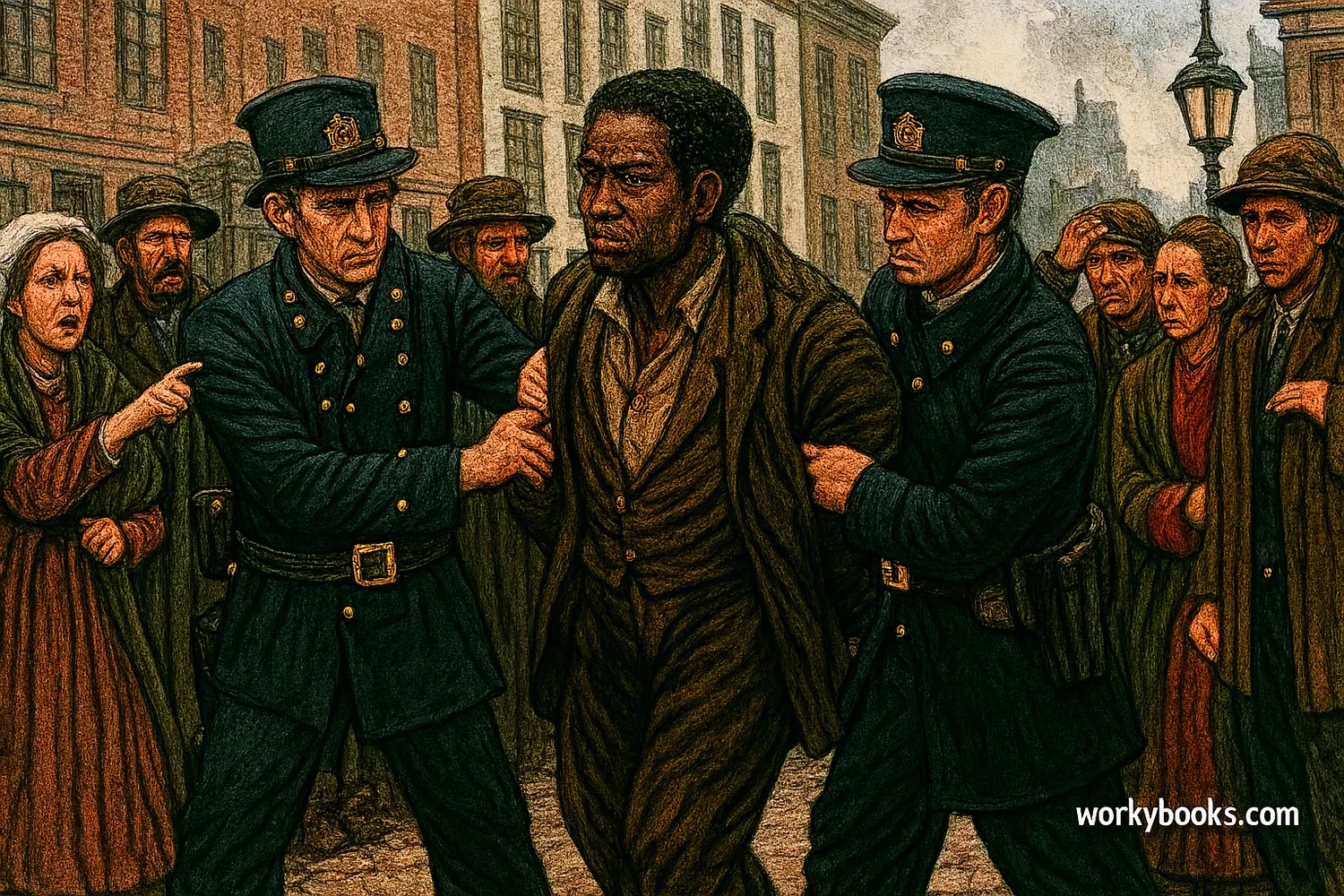
The Fugitive Slave Act was the most controversial part of the Compromise of 1850. This law:
- Required citizens to help capture escaped enslaved people
- Denied jury trials to captured African Americans
- Allowed special commissioners to decide cases
- Fined officials who did not arrest alleged fugitives
- Paid commissioners more for ruling in favor of slave catchers
This law angered many Northerners because it forced them to participate in slavery, even if they were against it. Some Northern states passed "personal liberty laws" to resist the Fugitive Slave Act. The law also made life dangerous for free African Americans in the North, who could be captured and sent into slavery without proof.
Resistance to the Law
In response to the Fugitive Slave Act, Harriet Beecher Stowe wrote "Uncle Tom's Cabin" in 1852, which became a bestseller and turned many Northerners against slavery.
Impact and Aftermath
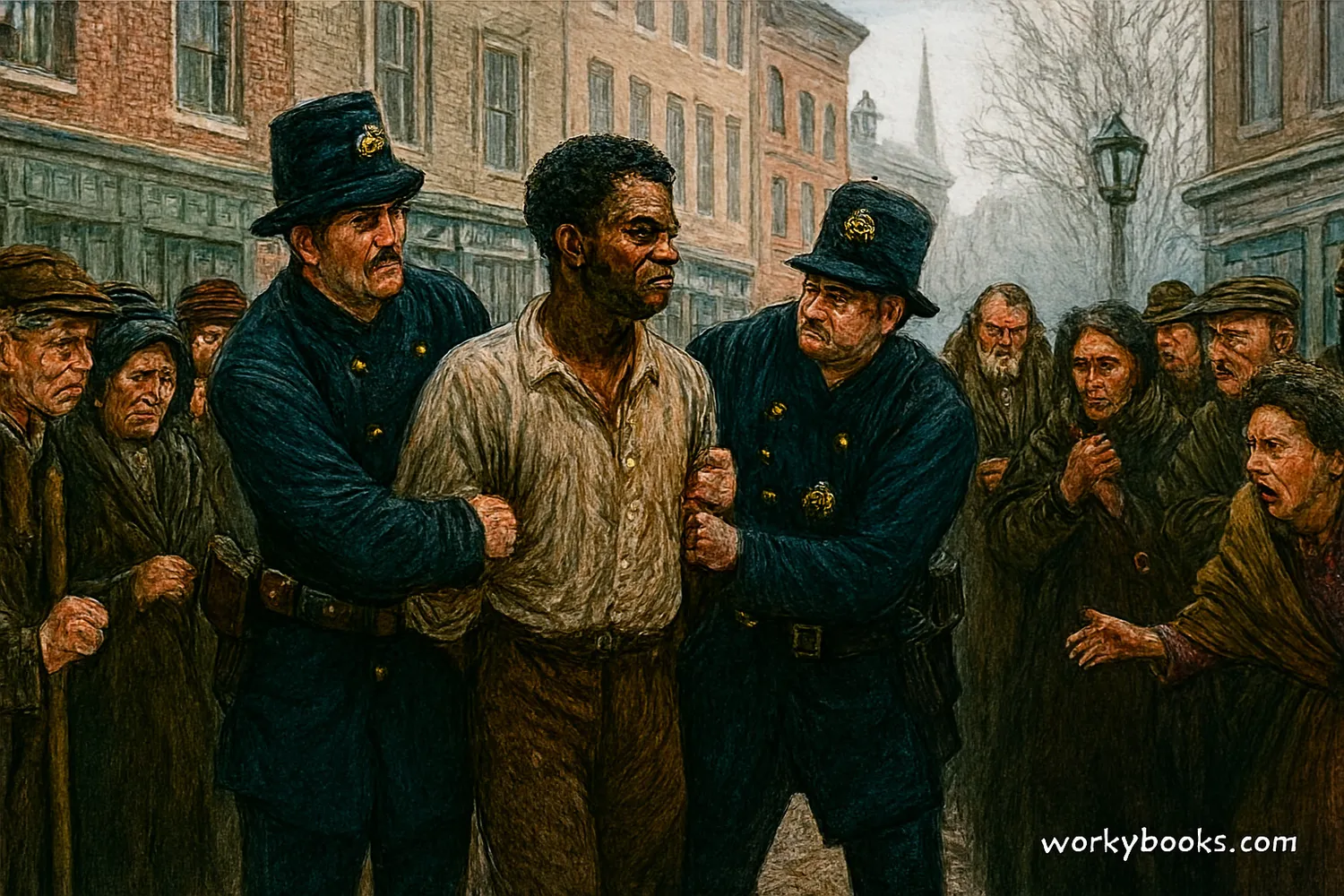
The Compromise of 1850 had mixed results. It temporarily eased tensions between North and South and delayed the Civil War for about 10 years. However, it ultimately failed to solve the fundamental problem of slavery.
Compromise Passed
The five laws are passed in September, temporarily calming sectional tensions
Uncle Tom's Cabin
Harriet Beecher Stowe's novel increases Northern opposition to slavery
Kansas-Nebraska Act
This law overturns the Missouri Compromise and renews sectional conflict
Civil War Begins
The failure of compromises leads to the American Civil War
The Fugitive Slave Act turned many moderate Northerners against slavery. The idea of "popular sovereignty" in the territories led to violent conflicts in Kansas in the mid-1850s. By the time Abraham Lincoln was elected president in 1860, the country was too divided for further compromises.
Compromise of 1850 Quiz
Test your knowledge about the Compromise of 1850! Answer all 5 questions to see how much you've learned.
Frequently Asked Questions
Here are answers to common questions about the Compromise of 1850:
Historical Trivia
Discover interesting facts about the Compromise of 1850 and this period in American history!
The Last Great Compromise
The Compromise of 1850 was the last time all sections of the country—North, South, and West—worked together on a major political agreement before the Civil War.
Separate Bills Strategy
When Henry Clay's comprehensive bill failed, Stephen Douglas broke it into five separate bills. This strategy worked because different groups could support different parts.
Literary Impact
The Fugitive Slave Act inspired Harriet Beecher Stowe to write "Uncle Tom's Cabin" in 1852. When President Lincoln met Stowe during the Civil War, he reportedly said, "So you're the little woman who wrote the book that started this great war."
Capitol Construction
Part of the Texas debt that the federal government assumed in the Compromise was used to fund construction of the U.S. Capitol building in Washington, D.C.


